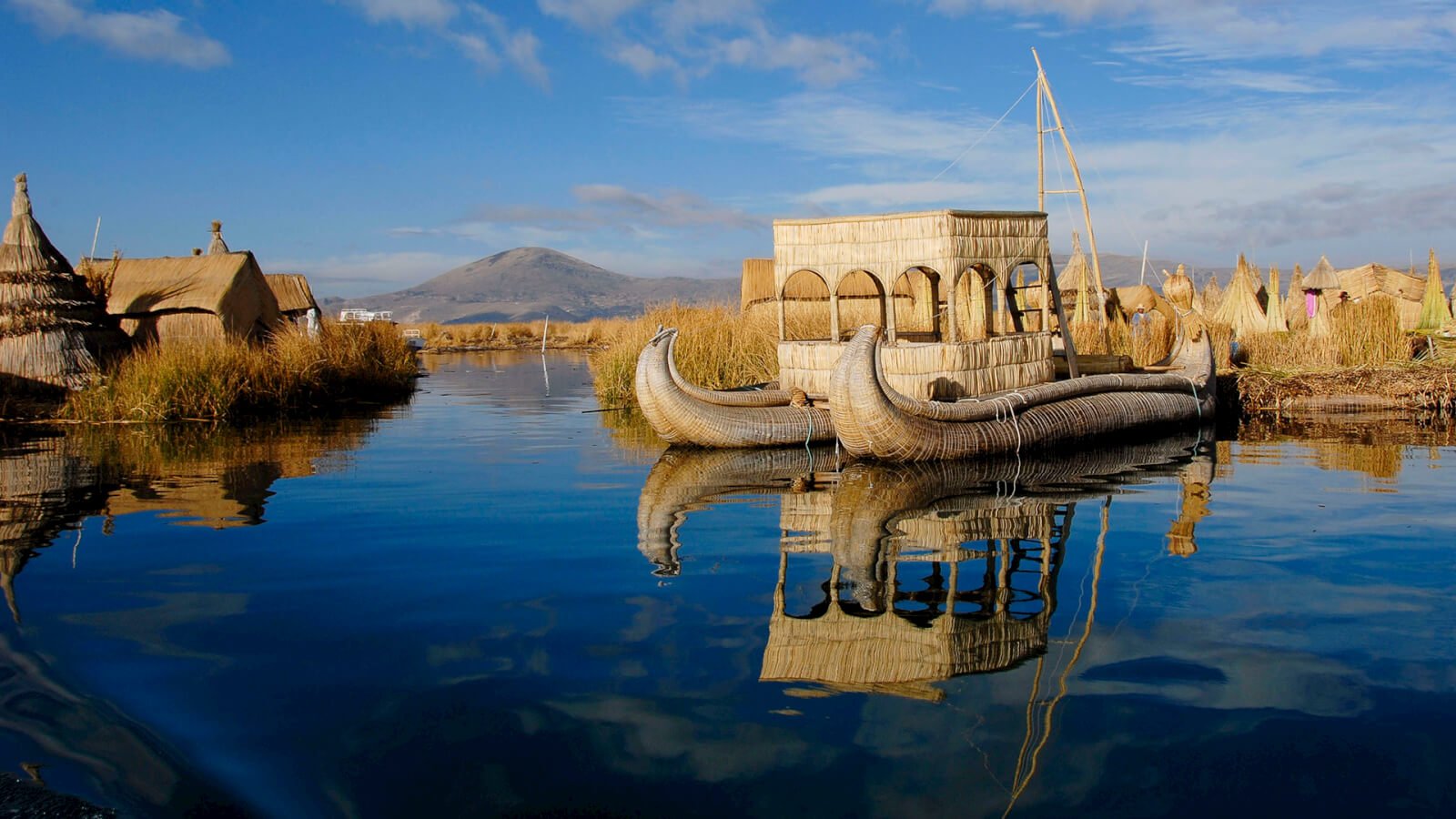Overview
Lake Titicaca , the cradle of Incan civilization, and the origin of the Inca Empire is the largest lake on the South American continent. It is reputed to be the highest navigable lake in the world (about 3810 m/12,500 ft above sea level), extending from southeastern Peru to western Bolivia. The lake is 196 km (122 mi) long with an average width of56 km (35 mi).
itinerary
DAY 1 – Cusco, Racchi, Puno
Today we begin our sojourn, starting out from Cusco and for a seven hour drive aboard private coach heading southeast over the high Andes that mark the border between the Departments of Cusco and Puno. The landscape along the way is dotted with beatifull landscape and snow capped, small colonial villages,churches and archaeological sites that we will visit and explore. The City of Puno itself lies against the spectacular backdrop of Lake Titicaca, at an altitude of 13,000 feet. Once in Puno we proceed to check into our hotel and have lunch. This is followed by a short rest and then a visit to the pre-Inca cemetery of Sillustani, known for it funerary towers built of finely cut and dressed andesite ashlars .
DAY 2 – Titicaca lake : Uros, Amantani islands
After an early breakfast we shall be transferred to the lakeside port of the city of Puno and put aboard one of the boats bound for the floating reed islands of the Uros. Here still survive remnants of what once was a large civilization. The survivors make a living by manufacturing handicrafts. After appreciating their lifestyle and customs, we continue navigating for three hours until arriving at the island of Amantani. Here we put in for the night, lodge in the local inhabitant’s homes.We have dinner with the family.
DAY 3 – Titicaca lake : Taquile island, Puno
After enjoying breakfast surrounded by the luminous view of the high peaks surrounding the lake, we continue our trip to the neighboring island of Taquile. Here there are pre-Inca ruins to visit and a population of less than two thousand people known for the quality of their hand woven textiles and their music. Following a good lunch, we return to the city of Puno and our lodgings at the hotel.
DAY 4 – Puno to Cusco by train
Today we return to Cusco by Train, according to your preference. In both cases we pass through beautiful scenic landscape and the familiar colonial villages dotting the countryside. Lunch on the road.
Note:
This section can be added to your Cusco – Machu Picchu trip.
Note:
It is also possible to fly from Lima to Juliaca, a large town only a few kilometers’ distance from Puno (where we will pick you up) and after completing this segment continue on to Cusco and Machu Picchu.
Includes
Private transportation to Puno,Train back to Cusco,Cruisses Boat to the inslands,Farmers house to stay in the inslands,Hotel In Puno.Some meals
Note
For adjusting to tour altitude, we suggest one day tours like the Sacred Valley, River Rafting and the City Tour of Cusco. As Guides we offer 100% Gauranteed Information, for your sensibilities – about the best specific hotel rooms and services around Peru, like extra windows and other amenities.
According to Incan mythology, Manco Capac and Mama 0cllo, also known as Mama Huaca, emerged from the depths of Lake Titicaca on the sacred rock gate on Isla Del Sol to found the Inca Empire. The sister island Isla de la Luna is not as well visited but is also a holy place as it housed the convent of the virgins of the sun. The entire lake was a holy place. Also connected with the legend of Lake Titicaca is the Lemurian Solar Disc which governed the thousand year cycle of Incan time.
According to legend, when the Spanish forces reached Cuzco, the Incas took the two-ton gold chain of Inca Huascar from the temple at Koricancha and threw it into the lake. It has never been found although some years ago Jacques Cousteau mounted an expedition to explore the lake with a mini-submarine. The best known islands on the lake are the floating reed islands which are maintained by adding fresh reeds to the surface even as the ones on the bottom decompose. The reeds are used for many things including the reed boats and sails in daily use on the lake and the totora rafts used in the voyages of Thor Heyerdahl, Ra I and Ra II, which crossed the Atlantic Ocean in the 1970s, were built on Suriqui Island.
Lake Titicaca is the center for archaeological and cultural studies as well as a favored tourist destination.
